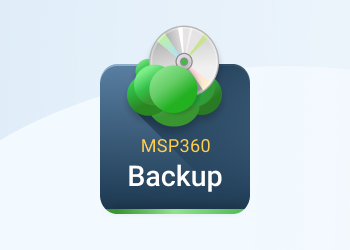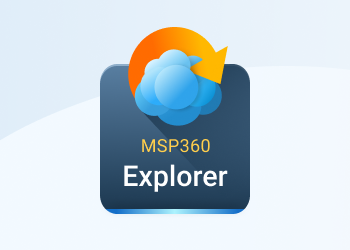We are happy to introduce MSP360 Backup for Microsoft 365 and Google Workspace 4.8, which brings a major addition to the storage experience – built-in managed cloud storage.
With this release, the need for third-party storage setup is entirely eliminated, configuration time is reduced, and administrators can start protecting Microsoft 365 and Google Workspace data immediately upon sign up. Continue reading
Your Computer Clocks Are Not Synchronized Error
One of the common errors that Amazon S3 users come across is "The difference between the requested time and the current time is too large" or "Your computer clocks are not synchronized". This error often occurs when your computer clock is not synchronized properly. Amazon returns an error code if the request doesn't come in a certain time interval.
Continue reading
How to Handle Parallel Data Upload With MSP360 S3 Explorer Pro
In this article we will overview how to manage parallel data uploads with MSP360 Explorer PRO for Amazon S3.
MSP360 Backup: Understanding Email Notification Report
MSP360 provides backup solutions with email notification service. Email notification reports make it possible to stay informed about the state of your backup and, thus, have full control over your backup. Continue reading
How to Create Subaccounts and Share Buckets Using IAM and MSP360 Explorer for Amazon S3
Identity and Access Management (IAM) is a service that allows creating user accounts inside the master account and grants those account a set of permissions. MSP360 Explorer PRO comes with full support for IAM service and you can learn more about that in our previous blog post.
In this blog post, we will look into the very common scenario of creating a subaccount within the master account and granting it permissions to create a bucket. This might be useful if you, for instance, work with freelancers and want them to be able to work with the content in their own bucket.
Continue reading
Requests Prices in Azure, Google and AWS Compared
Besides data volume charge, using cloud storage you pay for data transfer and operation requests. In this post, we will consider these fees for the most popular cloud storage systems: Amazon S3, Microsoft Azure, and Google Cloud.
Continue reading
How to Use Rotating Drives Strategy with MSP360 Backup
In this post, we will figure out what is rotating drives backup scenario and how to use it with MSP360 Backup.
Azure Storage Analytics Log Viewer in MSP360 Explorer for Microsoft Azure
This article describes how to use a Log Viewer tool in MSP360 Explorer for Microsoft Azure. This is a simple tool that helps you look over the log file in a human-readable format.
Windows Azure Storage Analytics Support in MSP360 Explorer
MSP360 Explorer client for Microsoft Azure Blob storage service is designed as an Azure storage browser that helps managing your data. Among other features, MSP360 Explorer forMicrosoft Azure supports Azure Storage Analytics tool.
Continue reading
How to Manage AWS IAM with MSP360 Explorer for Amazon S3
This article explains what AWS IAM is and how it is supported in MSP360 Explorer for Amazon S3. Continue reading
How to Add Custom Content-Types with MSP360 Explorer for Amazon S3
MSP360 Explorer for Amazon S3 is a popular Amazon S3 file manager. It comes with a comprehensive list of Content-Type headers. However, every once in a while our customers bring to our attention the fact that we are missing a certain Content Type. If a Content-Type is missing in the list, we apply application/octet-stream default content type. Sometimes it can cause issues such as the one recently brought up by in this blog post Deliver videos by Amazon S3/Cloudfront to iPhone or iPod touch. Continue reading
How to Use Amazon S3 Cost-Effectively
The benefits of Amazon Web Services are directly proportional to the number of ways to use it. It’s not unusual for the business to allocate a limited budget on cloud storage, but never use it to the max. Then it turns out the company uses several paid solutions for a bunch of tasks that can be accomplished with AWS.
We’ve prepared an Amazon S3 use case list that will help you take the most out of it in your workflow.
Continue reading










